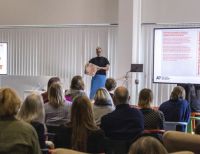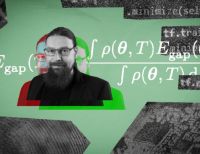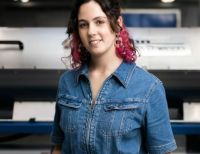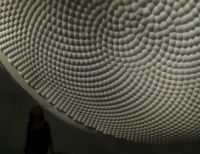Vast, three-dimensional models of urban environments are already a familiar sight – you might explore one in a video game, for example – but they can also be used for cities' information services, research and commercial purposes. 3D city modelling has become a common task in producing geographic data for cities. The Research Institute of Measuring and Modelling for the Built Environment (MeMo) at Aalto University both studies city models and produces the data used in their creation.
The MeMo research group produces data for city models through a variety of 3D measurement and modelling methods. In particular, they use methods based on photogrammetry or laser scanning, including drone-based aerial imaging, terrestrial laser scanning or SLAM-based mobile mapping, says Arttu Julin, a doctoral student with the group.
Three-dimensional city modelling and open data have both made significant advances in Finland, to the point where researchers can use complete sets of data, saving them the effort of beginning at the mapping stage.
'Current research focuses instead on increasing the level of detail of 3D city models in areas of interest, for example to support urban development. To achieve greater detail in a smaller area, we can use laser scanning or drone-based measurements. These methods are also a regular part of our research work,' adds Postdoctoral Researcher Juho-Pekka Virtanen.
Building smart data models
MeMo researchers are currently participating in two projects related to the use of 3D city models in the Capital Region: Helsingin älykäs tietomalli 2025 (Helsinki Smart Digital Twin 2025) in collaboration with the City of Helsinki, and the KAOS (Developing the knowledge capital in 3D city modelling) project funded by the European Social Fund.
'The Helsinki Smart Digital Twin 2025 project focuses especially on the utilisation and development of the capital's 3D city models. Its aim is to discover new and more efficient ways of using city models in different processes and business life. The project seeks to increase knowledge and grow the expertise and economic basis between the City of Helsinki, its citizens and companies,' according to Julin and Virtanen.
In the project, mapping campaigns are undertaken for research purposes. Research questions deal with increasing the model's level of detail in a given area and integrating building interiors to the 3D city model. As these kinds of data sets are not directly and freely available, they must be produced within the project, for example through SLAM laser scanning. The project is being conducted in close collaboration with the 3D team of the City of Helsinki.
The KAOS project is aimed at increasing expertise related to city models in the cities of Espoo and Helsinki and in companies. Instead of research, the project is weighted toward communications, events and mutual development between stakeholders. Virtanen says that areas that still needs strengthening are the technical basis for city modelling, 3D city models' use as a whole that supports the processes of an entire organisation and the utilisation of 3D city models as shareable data resources.
Three-dimensional city models around the world
The Finnish Capital Region is by no means the only area from which city model data has been gathered. In both Helsinki and Espoo, the city information modelling is based on CityGML, the established format for producing city information models. The creation of similar information models has been prolific especially in Europe, with models created of cities like Rotterdam, Berlin and Vienna; Switzerland even has a national-level project aimed at modelling the entire country.
'In addition to semantic CityGML information models, there are many visually impressive, photorealistic 3D city models, such as the City of Helsinki's separate 3D mesh model of the city. Realistic city models – focused on details and visually appealing appearances – and their production have also been among our key research areas here at Aalto. It's apparent that the "photorealistic" and "semantic" approaches are drawing closer to each other. An example of this would be the strong trend of developing and building digital twins of cities based on gaming technology,' notes Arttu Julin.
'3D city modelling in the Capital Region is on an international level. This means that many of the questions we study in our research projects are interesting and timely overseas as well. Many European cities are currently grappling with similar questions,' comments Virtanen.
















